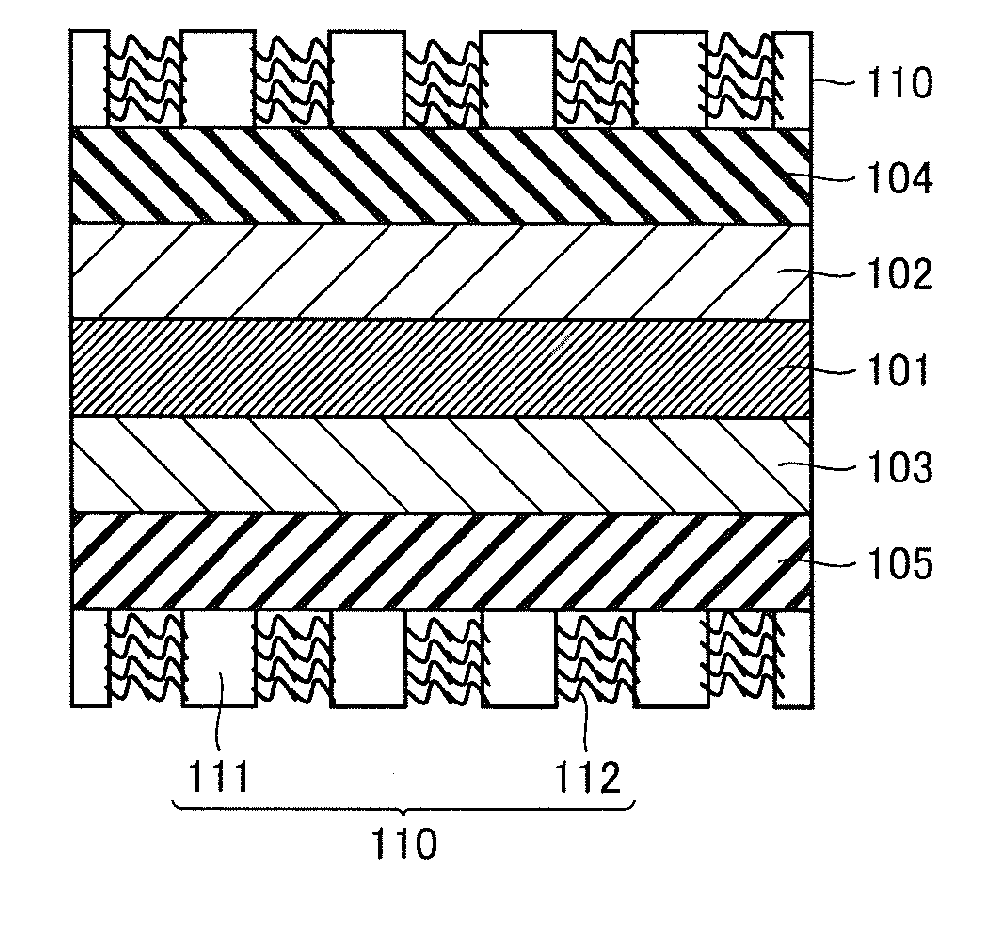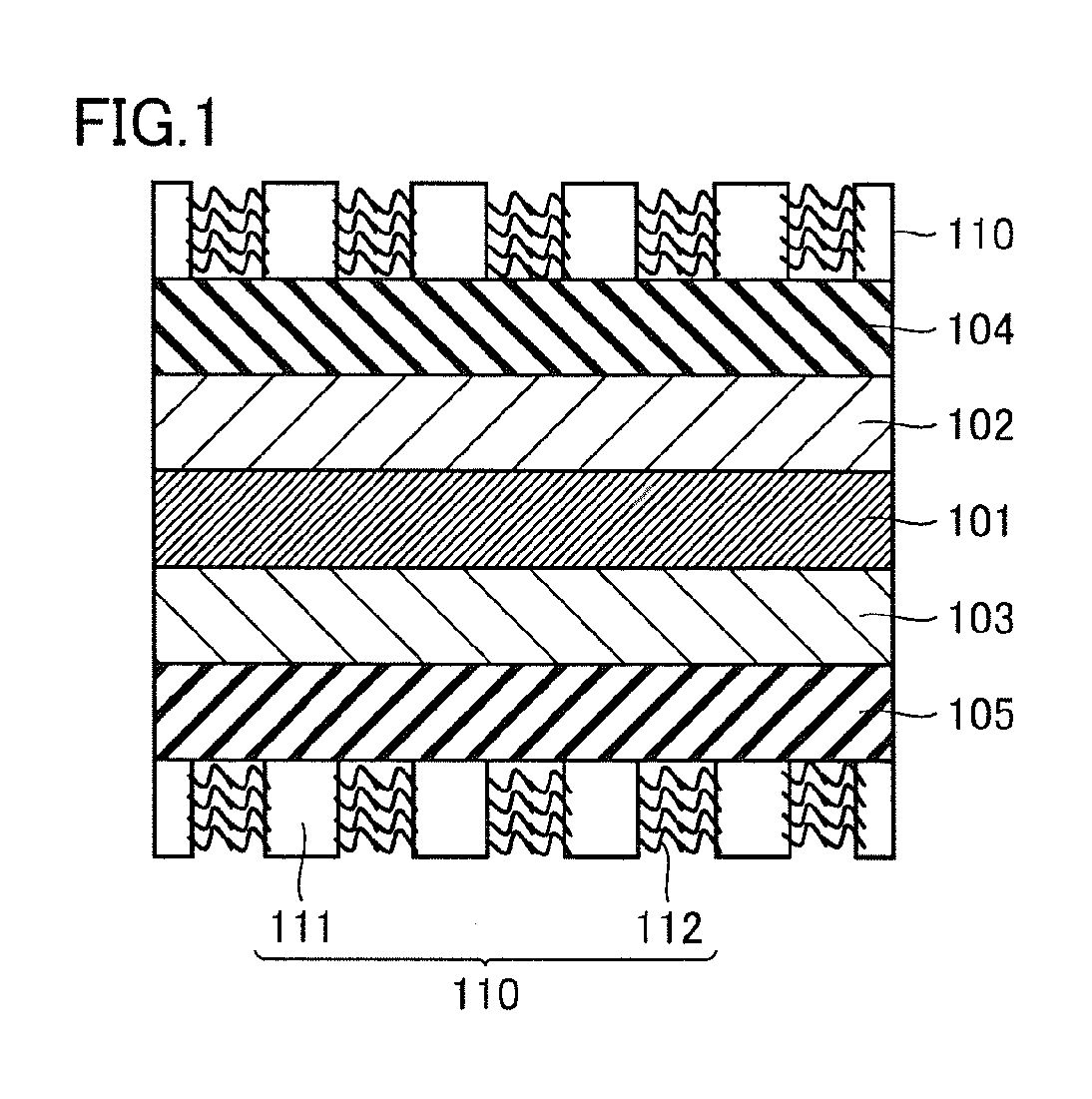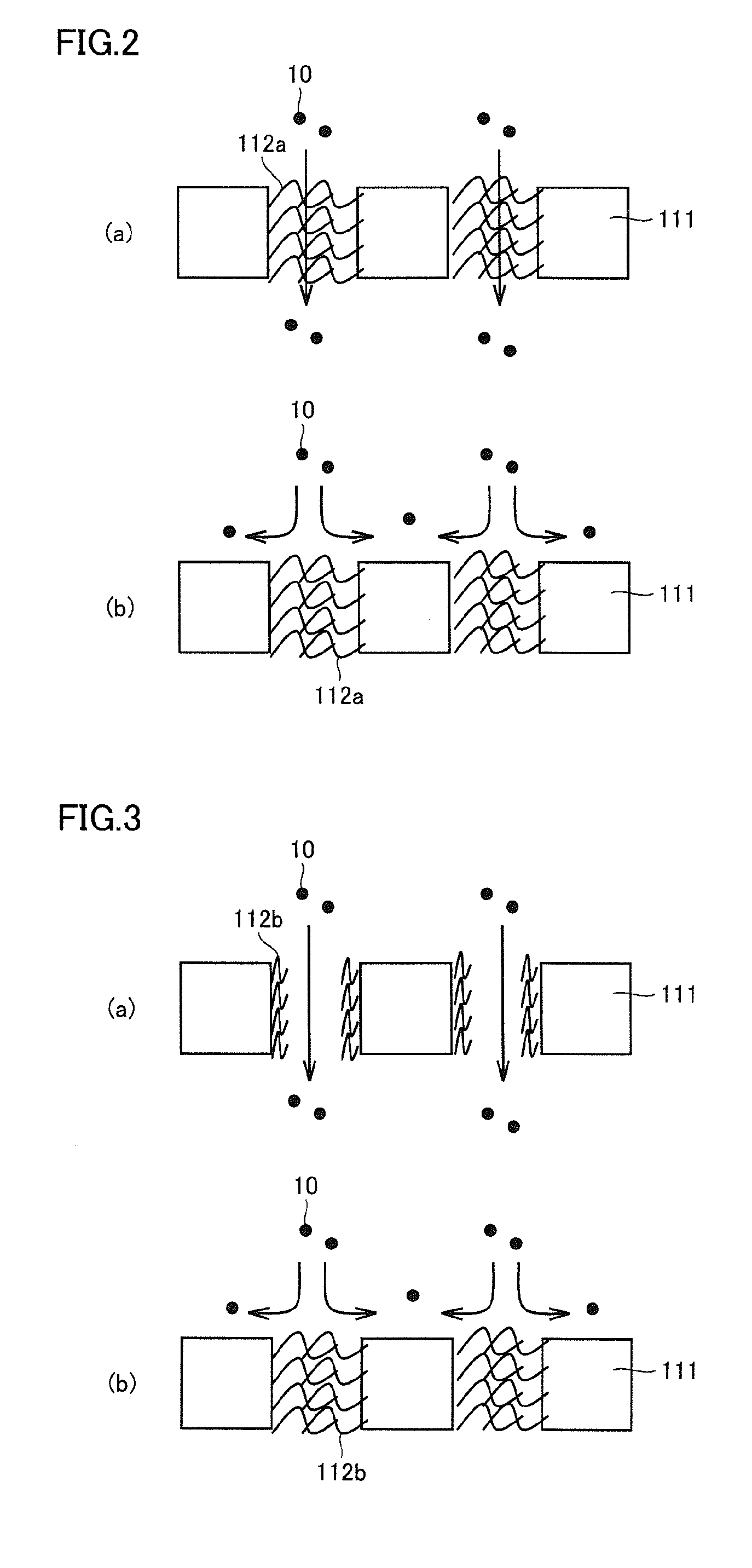Membrane electrode assembly and fuel cell using same
a technology of membrane electrodes and fuel cells, applied in the direction of fuel cells, water management in fuel cells, electrochemical generators, etc., can solve the problems of excessive cell temperature rise, insufficient current removal, and increased resistance of fuel cells, and achieve excellent power generation characteristics
- Summary
- Abstract
- Description
- Claims
- Application Information
AI Technical Summary
Benefits of technology
Problems solved by technology
Method used
Image
Examples
example 1
[0103]A membrane electrode assembly was fabricated in the following procedure, and then a fuel cell shown in FIG. 5 was fabricated.
[0104](1) Fabrication of Membrane Electrode Assembly
[0105]Pt—Ru-carrying carbon black (“TEC66E50” available from Tanaka Kikinzoku Kogyo), Nafion (registered trade name) solution (“Nafion (registered trade name) 5% by weight solution, product number 527084” available from Sigma-Aldrich), and isopropyl alcohol were mixed by using an ultrasonic homogenizer. The obtained mixture was applied on one surface of a proton type Nafion 117 film (Product number 274674 available from Sigma-Aldrich) as an electrolyte membrane by spraying and dried to form an anode catalyst layer.
[0106]On the other hand, Pt-carrying carbon black (“TEC10E50E” available from Tanaka Kikinzoku Kogyo), Nafion (registered trade name) solution (“Nafion (registered trade name) 5% by weight solution, product number 527084” available from Sigma-Aldrich), and isopropyl alcohol were mixed by using...
example 2
[0112]After irradiating a porous layer (porous film including “TEMISH (registered trade name) NTF1121” available from NITTO DENKO CORPORATION and polytetrafluoroethylene, porosity 90%) with plasma, the porous layer was dipped in a monomer solution dissolving N-isopropylmethacryl amide in a mixed solvent of 70% by weight of water and 30% by weight of methanol (concentration 10% by weight) to obtain a temperature responsive layer in which poly-N-isopropylmethacryl amide (temperature responsive material) is grafted to the wall of pores of the porous layer. Weight gain by the graft polymerization was 11.1%. A membrane electrode assembly was fabricated in a similar manner to Example 1 except that this temperature responsive layer was used, and a fuel cell was obtained in a similar manner to Example 1.
example 3
[0113]A monomer solution dissolving N-isopropylmethacryl amide and azobisisobutylonitrile (polymerization initiator) in a mixed solvent of 70% by weight of water and 30% by weight of methanol (concentration 10% by weight) was prepared. Next, both surfaces of a porous layer (porous film including “TEMISH (registered trade name) NTF1121” available from NITTO DENKO CORPORATION and polytetrafluoroethylene, porosity 90%) were covered with a mask (formed of polyphenylene sulfide) that was patterned into a grid form so that 50% of the surface was exposed, and both ends were secured with clips, and then the porous layer was dipped in the aforementioned monomer solution, and irradiated with ultraviolet ray, to obtain a temperature responsive layer wherein in the plane of the porous layer, region A consisting of pores filled with poly-N-isopropylmethacryl amide (temperature responsive material) and region B consisting of pores not filled with the same are arranged in a grid pattern, and the p...
PUM
| Property | Measurement | Unit |
|---|---|---|
| boiling point | aaaaa | aaaaa |
| thickness | aaaaa | aaaaa |
| pore diameter | aaaaa | aaaaa |
Abstract
Description
Claims
Application Information
 Login to View More
Login to View More - R&D
- Intellectual Property
- Life Sciences
- Materials
- Tech Scout
- Unparalleled Data Quality
- Higher Quality Content
- 60% Fewer Hallucinations
Browse by: Latest US Patents, China's latest patents, Technical Efficacy Thesaurus, Application Domain, Technology Topic, Popular Technical Reports.
© 2025 PatSnap. All rights reserved.Legal|Privacy policy|Modern Slavery Act Transparency Statement|Sitemap|About US| Contact US: help@patsnap.com



